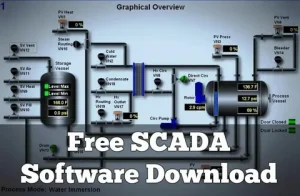Introduction
Solar power has become an achievable option as the globe searches for sustainable and clean energy alternatives. To make the most of solar energy, conducting an accurate solar potential assessment of a given area is crucial. To perform such assessments, the PVSYST program is a helpful tool. In this article, we’ll talk about why it’s essential to evaluate solar potential and how you can do it with the help of the PVSYST program. Visits the Technical Files website to download PVsyst Software free.
The Significance of Solar Potential Assessment
The amount of usable solar energy at a given site is calculated through solar potential assessment. This assessment is crucial for several reasons:
1. Investment Decisions
For individuals, businesses, or governments considering solar energy installations, knowing a site’s solar potential is essential for making informed investment decisions. It helps estimate the expected energy production, financial returns, and payback period.
2. System Design
Accurate solar potential assessments are fundamental for designing efficient solar PV (photovoltaic) systems. The data obtained helps engineers size the solar array appropriately and choose the right components to maximize energy generation.
3. Environmental Impact
Understanding solar potential allows for better planning and utilization of solar energy, reducing the reliance on fossil fuels and lowering greenhouse gas emissions. It contributes to environmental sustainability and climate change mitigation.
4. Grid Integration
Utilities and grid operators need solar potential assessments to plan for effectively integrating solar power into the electrical grid. This ensures grid stability and reliability.
PVSYST Software: An Overview
PVSYST is a widely used software tool for simulating, analyzing, and optimizing solar PV systems. Developed by PVsyst SA, it provides a comprehensive platform for assessing solar potential and designing solar installations. Here are some key features of PVSYST:
1. Solar Irradiance Modeling
Solar irradiance is modeled by PVSYST using complex algorithms that account for things like latitude, longitude, time of day, and weather. This data is crucial for estimating the sunlight a location receives throughout the year.
2. System Simulation
Different panel kinds, orientations, and tilt angles can all be simulated to see how different solar PV system configurations function. This helps in evaluating the energy production potential of a specific setup.
3. Shading Analysis
PVSYST can perform shading analysis, identifying potential obstructions like trees, buildings, or other structures that may cast shadows on the solar panels. This is crucial for optimizing panel placement to minimize shading and maximize energy production.
4. Financial Analysis
PVSYST has built-in financial modeling tools that can be used to determine whether or not a solar PV project is financially feasible. It considers equipment costs, maintenance expenses, incentives, and energy prices to estimate the project’s financial returns.
5. Extensive Database
The software offers an extensive solar panel and inverter models database, making it easier to select the most appropriate equipment for a specific project.
Steps to Perform Solar Potential Assessment with PVSYST
Performing a solar potential assessment using PVSYST involves several key steps:
1. Location and Site Data
The first step is to input accurate geographical and site-specific data into PVSYST. This includes latitude, longitude, elevation, and local climate conditions. Accurate data is critical for precise solar irradiance calculations.
2. System Configuration
Next, users define the characteristics of the solar PV system they intend to assess. This includes specifying the type and efficiency of solar panels, the type of inverters, tracking systems (if any), and other relevant parameters.
3. Irradiance Modeling
PVSYST uses built-in algorithms to model solar irradiance for the specified location and time frame. This data is crucial for understanding the solar energy potential throughout the year.
4. Shading Analysis
The software can perform shading analysis to identify potential obstructions and shading patterns. Users can adjust the system layout to minimize shading effects.
5. Simulation
PVSYST allows users to simulate the performance of the solar PV system under different conditions. This helps assess energy production variations based on panel orientation, tilt angle, and system configuration.
6. Financial Analysis
Users can input financial parameters into PVSYST to evaluate the project’s economic feasibility. The software provides estimates of energy production, electricity savings, and financial returns over the project’s lifetime.
7. Optimization
Based on the simulations and financial analysis results, users can make informed decisions to optimize the solar PV system’s design and configuration for maximum efficiency and profitability.
Benefits of Using PVSYST for Solar Potential Assessment
Using PVSYST for solar potential assessment offers several advantages:
1. Accuracy
PVSYST employs advanced algorithms and weather data to provide highly accurate solar irradiance predictions. This precision is required for rational solar project planning.
2. Comprehensive Analysis
The software allows for a detailed and comprehensive solar potential analysis, considering various factors that impact energy production.
3. Visualization
PVSYST provides visual representations of data, such as irradiance maps and shading analysis, making it easier for users to understand and communicate the results.
4. Optimization
Users can use PVSYST to optimize system designs for maximum energy production and financial returns, leading to more cost-effective solar installations.
5. Integration with Other Tools
PVSYST can be integrated with other software tools and databases, streamlining the design and analysis process.
Conclusion
Solar potential assessment is a crucial step in efficiently harnessing solar energy’s power. PVSYST software offers a powerful and comprehensive solution for conducting such assessments. PVSYST helps individuals, businesses, and governments make informed decisions about solar PV projects by accurately modeling solar irradiance, simulating system performance, and performing financial analysis. Tools like PVSYST are crucial in reaching the full potential of solar power as the world continues to migrate towards cleaner and more sustainable energy sources.








